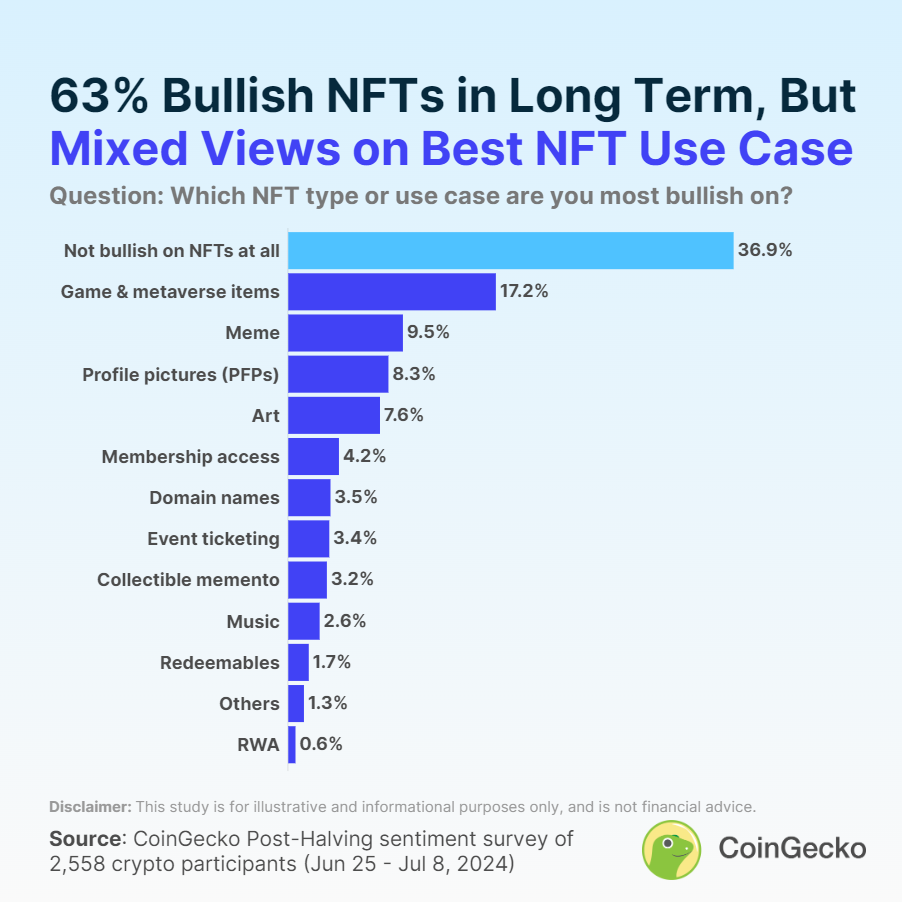Only 19% of crypto investors expect an NFT comeback this cycle: CoinGecko
Gaming and metaverse items emerge as top NFT use case, with 17.2% of participants most bullish on this application.

Key Takeaways
- 54.1% of crypto participants don't expect NFTs to come back in the current market cycle.
- Gaming and metaverse items are considered the most promising NFT use case by 17.2% of respondents.
Share this article
A recent CoinGecko survey reveals that 54.1% of crypto investors do not expect non-fungible tokens (NFTs) to return in the current market cycle. Only 19.4% of respondents expressed optimism about an NFT resurgence in the near term.

The survey, which gathered responses from 2,558 crypto participants, found that 29.5% strongly disagreed with the possibility of an NFT comeback, while 24.7% were less bearish but still skeptical. A neutral stance was taken by 26.4% of participants.
Sentiment towards NFTs remained consistent across different crypto experience levels, with newcomers and veterans sharing similar views. However, builders and spectators showed more optimism compared to investors and traders.
As reported by Crypto Briefing, NFTs are still seen as powerful engagement tools by builders, despite the current lack of speculative momentum. Caitlyn Burns, Senior Director of Story at Candy Digital, stated that engagement through NFTs differentiates itself from everything seen in Web2.
“And this is something that transcends market conditions because the utility, the experience of being a part of these larger comics programs is bigger than any particular month in any particular moment in a speculative community,” she added.
Gaming and metaverse items emerged as the most popular NFT use case, with 17.2% of participants considering it the most promising. Memes (9.5%), profile pictures (8.3%), and art (7.6%) followed as other favored applications.

Notably, 36.9% of respondents identified as NFT bears or expressed apathy towards the technology. The survey was conducted from June 25 to July 8, 2024, with participants primarily from Europe, Asia, North America, and Africa.
